Fluffy, sociable, lynx-like - what else do we know about Norwegian forest cats? Meanwhile, they became famous in Scandinavian myths, became the subject of a royal decree, and until recently were on the verge of extinction. 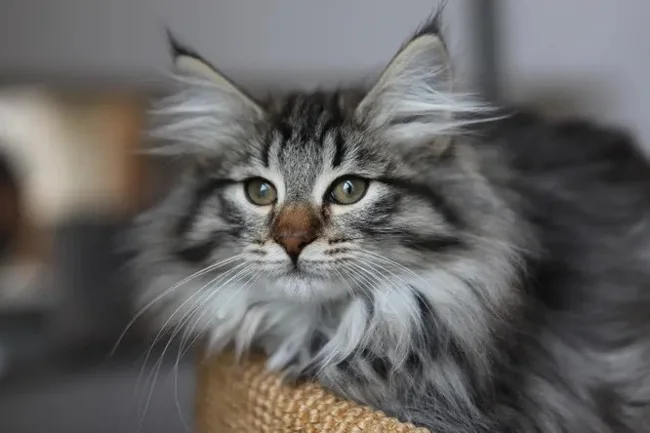
Norwegian forest cats are most popular in the Nordic countries. Representatives of this breed combine stamina, beauty, intelligence and hunting skills.
History of the Norwegian Forest cat breed
Friends of tough warriors. Let's start our description of the Norwegian Forest Cat breed with history. According to one version, this is a descendant of a black and white short-haired cat, which the Vikings used on their ships as a mousetrap. The exact origin of the Norwegian forest cat is still a mystery. There is another opinion that the Norwegian cat descended from the Angora cat, which was brought to Scandinavia by the Crusader knights. In any case, the ancient ancestors of the Norwegian Forest cat roamed Norway, mixing with local wild and domestic cats. To live comfortably in the Scandinavian forests, cats needed that very fluffy “coat” by which we unmistakably recognize them today. To this day, at the gene level, they have carried both a love for wild nature and a friendly attitude towards the people with whom they have neighbored from time immemorial. 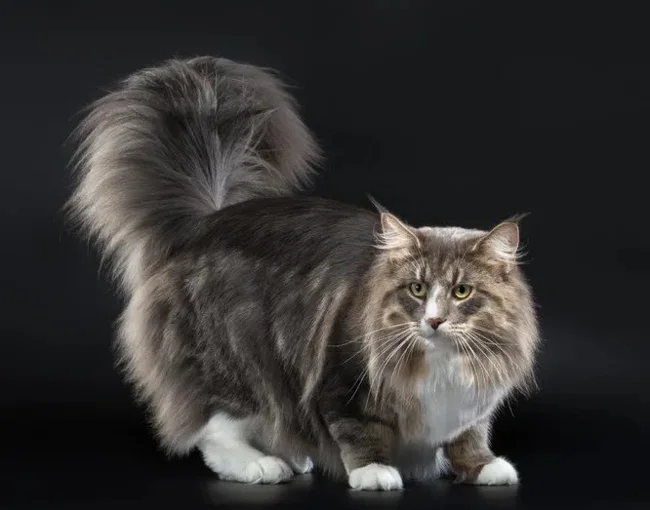
The coat of the Norwegian forest cat requires daily care, otherwise tangles may occur; the animal must be combed especially carefully during shedding.
Mythical creatures. Norwegian forest cats didn't just catch mice around houses, they are glorified in the myths and legends of Norway. Thus, one of the mythical characters is named Skogkatt, which is translated from Norwegian as “forest cat” - a fluffy cat that can climb mountains along smooth steep rocks, which other cats cannot do at all. Perhaps it was the Norwegian forest cats that served as the prototype for the mythical image due to their special skin and the dexterity with which they climbed tall trees.
In addition, Freya, the goddess of love and war in German-Scandinavian mythology, is said to have traveled in a chariot pulled by large fluffy cats. And in one of the legends, the god Thor loses his powers thanks to the cunning Jormugand, who approaches Thor in the guise of the cat Skogkatt.
The Norwegian Forest Cat is the symbol of Norway. King Olav V of Norway, who reigned for the last century, designated the Norwegian Forest Cat as the official national cat. Not every cat can boast of such a title! 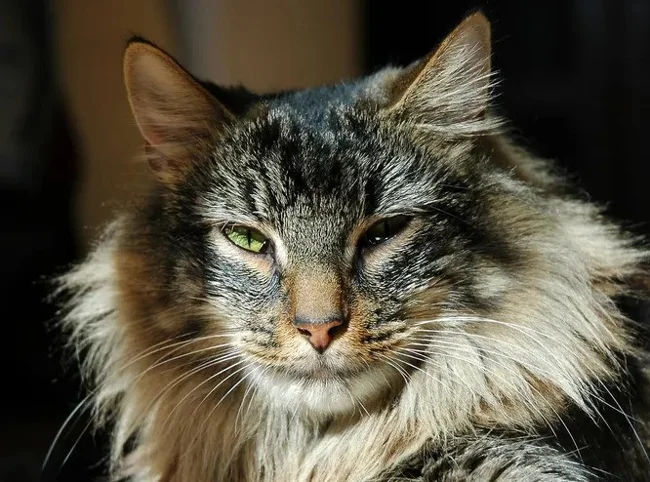
The water-repellent fat layer on the coat of the Norwegian Forest Cat directly affects the health of the pet. Therefore, it is worth bathing cats of this breed only in extreme cases: when treating for fleas; when the fur is heavily soiled.
On the verge of extinction. Scandinavian farmers and sailors have valued the Norwegian forest cat as a faithful mousecatcher for many centuries. However, international cat experts knew nothing about this breed until 1930, when the Norwegian Forest Cat first took part in an international cat show in Germany and created a sensation there. During World War II, attention to cats waned, and the Norwegian Forest was on the verge of extinction, interbreeding with other breeds. Then it was necessary to create a special program to protect the Norwegian forest cat. It was only in 1977 that the International Cat Federation (FIFe) officially recognized the Norwegian Forest as a separate breed. In those same years, King Olav V declared her the national cat and one of the main symbols of the country. This helped preserve the unique breed.
Popularity in Europe. The Norwegian Forest Cat was brought to America in the eighties. However, in the United States, the Norwegian Forest Cat is not even among the top 10 popular breeds. But how many fans does Norwegian forestry have in European countries? Separately, it is worth highlighting France and, of course, Norway. Many breeders even call the cat "Waggie", i.e. "Wegie", as a derivative of "Norwegian".
What does a Norwegian Forest cat look like?
Almost like a lynx. The Norwegian Forest Cat is not only larger than other cat breeds, but also larger than some dog breeds. The average male Norwegian forest cat can weigh between 5 and 10 kg. In addition, they are distinguished not only by their size, but also by their strong physique. Real furry Vikings!
Norwegian forest cat colors. The color of the coat can be white, black, cream, silver, gold, tortoiseshell. 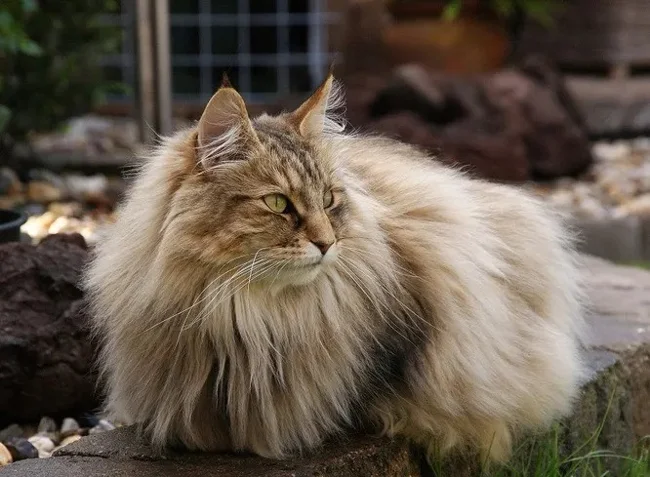
Cats of this breed have different colors. Almost all color variations are possible. Norwegian forest cats can be black and white, red, or brownish. Only the Siamese color is impossible. Today, several standards for this breed have been approved. Thus, only in Europe there are three Norwegian forestry standards - according to the FIFE, GCCF and WCF versions. In the USA, the Norwegian Forest is recognized by the felinological organizations CFA and TICA
Climbing cats. Norwegian forest cats would make excellent rock climbers. Have you ever seen a cat running headlong out of a tree? Most likely it was a Norwegian Forest one. Unlike other breeds, they have particularly strong paws, which allows them to perform similar feats.
Winter wardrobe. Despite the variety of colors of the Norwegian Forest Cat that exist within the breed, all Norwegian Forest Cats can boast of rich winter “clothing”. This is a base coat with a thick undercoat and long outer coats along the ridge and on the tail. Hair has water-repellent properties. The long tail reaches the line of the shoulders, and not only the ears are decorated with a tassel, but also the wide round paws (between the toes) - it turns out to be a kind of “hat” and “boots” for the cat. Knowing how severe the Scandinavian climate can be in winter, such decoration is not only beautiful, but also reasonable. 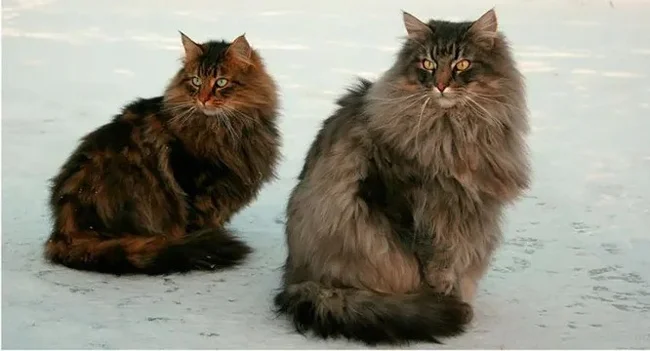
The description of the Norwegian Forest Cat is as follows: the head is triangular in shape, the neck is thick and muscular. The ears are medium in size. The hind legs are slightly longer than the front legs.
Family ties to the Maine Coon. Large, fluffy - the Maine Coon and the Norwegian Forest Cat look like close relatives. The external resemblance does not deceive you. Genetic testing has shown that the Maine Coon, a native cat breed in the United States, is a descendant of a Norwegian forest cat mixed with some other, now unknown, domestic breed. What is the difference between a Norwegian Forest cat and a Maine Coon? Pay attention to the muzzle; Norwegian forest cats have a triangular muzzle, while Maine Coons have a wedge-shaped muzzle with high cheekbones.
Health
Strong, but fragile. Unfortunately, Norwegian forest cats cannot boast of the same endurance that their ancient Viking owners were famous for. They are prone to heart disease, hip dysplasia, and glycogen storage disease (glycogen type IV), akin to diabetes. So, despite their external strength, Norwegian forest cats require care and sensitive attention from the owner. 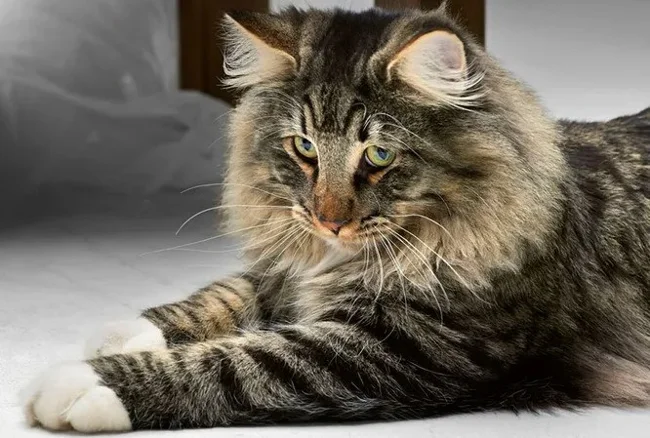
If a Norwegian Forest cat receives proper care and enough exercise, it can live 15-16 years while remaining active.
Characteristics of the Norwegian Forest Cat breed
The Norwegian Forest Cat has an easy-going and friendly character. She loves to communicate with her owners and recognizes them. Representatives of this breed are quite playful, because they have hunting roots. Therefore, Norwegian forest dogs are happy to attack toys and frolic with them.
Nutrition
Cats of this breed do not require any special tricks in terms of nutrition. The basis of the Norwegian Forest Cat's diet is animal protein, which requires a lot for normal development. For example, you can feed your pet lean chicken or turkey. Your cat's diet should be balanced, so don't forget to include grains and vegetables in your diet. Let us remind you that when making calculations it is necessary to take into account the current weight of the pet. Professional food is also suitable for Norwegian forest cats. 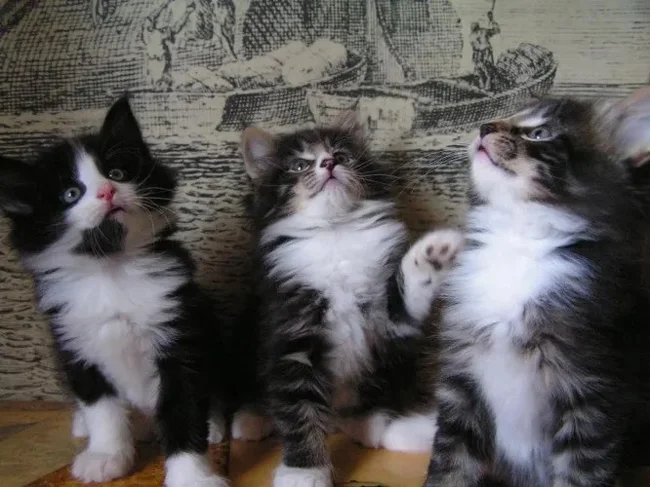
Care
It is recommended to take Norwegian forest cats for walks at least twice a month, so the ideal place of residence for them is still a private home. In addition, the ability to climb vertical surfaces is very important for this breed as it is part of their natural behavior. Being a territorial animal, the Norwegian forest cat prefers to have its own territory. She needs perches and space where she can run around.
0 comments
